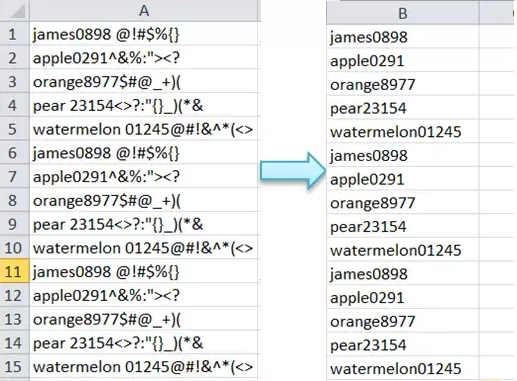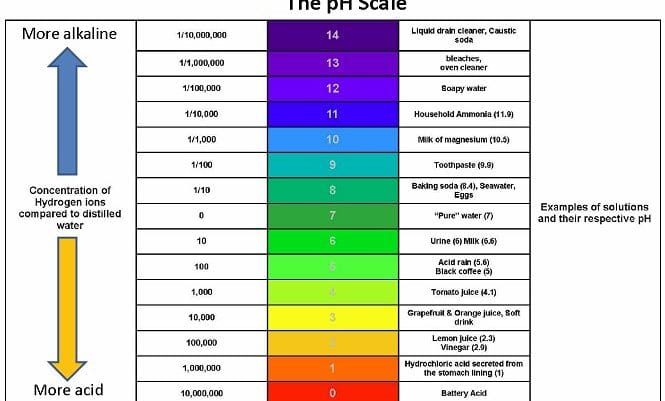
The term alphanumeric refers to a mix of alphabetical and numeric characters. It is used to define a group of Latin letters and Arabic numbers. Thus, a text built from this collection.
According to Merriam-Webster, the term “alphanumeric” can also apply to other symbols such as punctuation and math symbols. Alphanumeric, often known as alphameric, refers to the Latin and Arabic characters. These represent the numerals 0 – 9, the letters A – Z (both capital and lowercase). Also there are certain common symbols like @ # * and & under these. Sites for which you need to generate such a password demand that a mixture of numbers and letters. These result in better passwords.
We also use alphanumeric keys to produce file names. However, some symbols, such as a slash (/), are not allowed as part of a file name. That doesn’t appear to be that secret, does it? When we talk about these characters in terms of real computer programming, the secret language portion comes into play.
These characters are those in layouts created for English language users. These are made up of the mixed set of the 26 alphabetic characters. If you also want to know more about this topic, you’re welcome here. Read on as we explore the facts about this system.
Alphanumeric characters example
Alphanumeric characters
- Alphabetic characters A–Z.
- 0 through 9 numeric characters.
National characters
- At sign @.
- Dollar sign $.
- Pound sign #.
Special characters
- ampersand &
- asterisk *
- blank
- braces { }
- brackets [ ]
- comma ,
- equal sign =
- hyphen –
- parenthesis ( )
- plus sign +
- semicolon ;
- single quotation mark ‘
- slash /
Alphanumeric characters overview
Computers (or chip components) communicate in the form of numbers. Computer engineers need to write their directions in numbers rather alphabet letters. To do this, coders use math depictions of what humans perceive as alphabet letters. Binary coding, which employs just 0s and 1s to represents these characters, is certainly something you’ve heard or seen. Computer geeks may show whatever character they choose using an order of 0s and 1s.
ASCII is another way by which computer programmers use these characters. ASCII is an acronym that stands for American Standard Code for Information Interchange.
To utilize numbers as ASCII code, you must use a text editor such as Notepad. In other words, you can save a Word file as text only by choosing the plain text option. A computer programmer may use the ASCII table to represent the word red’ using the digits 82 69 68. That is correct, unless they wanted it in lower case letters, in which case it would be 114 101 100.
Alphanumeric Character Definition
As a result, these characters include 2, 1, q, f, m, p, and 10. Symbols such as *, &, and @ are also fall under this category.
We can also use these characters together. AF54hh, jjHF47, and @qw99O are examples of these characters. These are made up of a combination of special symbols, numbers, and alphabets. They can write the alphabets in either lower or upper case. The usage context affects whether or not case sensitivity is used.
You Also Like: Combination Reaction: Definition, Examples & Exothermic In Nature
Some of these sets remove letters that are often mistaken with digits while coding. Airlines and automobile manufacturers, for example, both omit the lowercase letter I to prevent confusion with the numerical 1. Automobile manufacturers also omit the letters O and Q to avoid confusion with the number 0. Other programs do not make use of the letter S. Often the treatment of these isn’t designated as lookup characters. Then, they are known by whether they’re regarded as punctuation characters or logos.

Non-alphanumeric Characters
Word order is preserved in a multi word hunt utilizing words separated by punctuation marks. This is just the same while we are searching for a term. The following characters are punctuations: @ # & # () – []: ‘/ *
These characters that are popular as symbols are also considered white space. They do not, however, retain word order inside a multi word search, unlike punctuation characters. When a logo character is next to such a character, the symbol character is not under thought. That is, the combination of this symbol and the punctuation character is just the same as a punctuation character.
A search on ice cream, for example, would produce the same results as a phrase search for ice cream. But a search for ice hockey cream would yield the same results as just looking for ice cream. An ice-cream inquiry would function similarly to ice-cream research.
Alphanumeric characters password
A password with these characters consists of numbers, letters, and special characters (like &
or #). In principle, alphanumeric passwords are more difficult to crack than letters-only passwords. They can, however, be more difficult to develop and recall.
Almost 80% of us change our passwords every 90 days. This we do when we forget it. Often it is difficult to remember our passwords.
However, this simple action might help secure a company’s precious assets and data.
Is your password also full of basic alpha characters? You don’t have an alphanumeric password if you enter anything like “password” to get access to your system. If you have to type “p@ssw3rd$,” you’re adhering to the principles we’re discussing here.
When your employer enforces an alphanumeric password requirement, you must choose a something that includes:
- Letters: Anything from A to Z is acceptable. It is possible that you may be forced to mix uppercase and lowercase variants.
- Numbers: Any value in between 0 and 10.
- Characters that stand out: There are unusual symbols ranging from dashes to dollar signs to parentheses.
If you look at the math, you’ll see why these stages are so crucial. A hacker has 266 guesses if your password is only six letters long. A hacker has 7212 options if your password comprises 12 characters, including numbers and symbols. It takes a huge time to guess a password like this. There are no specific alphanumeric rules. Some firms require more characters, while others require less.

Steps to create one alphanumeric password
If your firm demands alphanumeric passwords, you have to be inventive to comply with all the laws and regulations. Harvard University, for example, mandates passwords that are:
- Long: Passwords must be at least ten characters long, although students may use up to 100 characters.
- Varied: Students must use at least five distinct characters.
- Alphanumeric: Uppercase letters, lowercase variants, and special characters must all be included.
What should a password look like for a firm like this? A good password is:
- Randomized: Use nothing identifying, such as your name, address, or the name of your pet.
- It’s simple to remember: Phrases are more difficult to forget than random data strings.
- Scrambled: Don’t stack numbers and characters at the beginning and finish.
Assume we’ve just finished watching Grey’s Anatomy. We haven’t mentioned the program on social media, and we don’t work as a writer or performer for it. We might use this software to generate an alphanumeric password for Harvard. Here are a few examples of these passwords using this theory:
Gr@y&At0m
(r@yz&at0My
Gr8yz&atOMY!
When you come up with the perfect password, don’t write it down on anywhere. Also do not share it with your closest buddy. Consider it a carefully kept secret that can help keep your firm secure. But, keep in mind that even the strongest passwords may be quite easy for hackers.
Alphanumeric characters username
A username or password with alphanumeric characters must have at least one letter (“alpha”) and at least one number (“numeric”). Upper and lowercase letters, as well as special characters, may be added to the criteria. Here are a few examples.
Sarally2021
\sSarally2021
\ssarally*2021
Sarally-2021
Alphanumeric characters regex
Checking for alphanumeric input is a widespread practice throughout the internet. How can we use regex to validate this input? A regular expression for an alphanumeric string verifies that it contains lowercase letters a-z, capital letters A-Z, and digits 0-9. String length is specified using optional quantifiers. And the code that fulfils all of this looks like this:
/^[a-zA-Z0-9]+$/
Regex Pattern for Alphanumeric Strings
In square brackets, we may begin creating our regex by adding the character class’s a-z, A-Z, and 0-9. We can match any of the characters in that range, as shown by the square brackets. This currently matches any alphanumeric text, but we can make it smarter by giving a length as well. The quantifier + after the square brackets ensures that one or more letters in the square brackets are matching. The zero or more quantifier * functions similarly to the + quantifier above. But it will also match an empty string with zero characters.
If you want to define a certain amount of characters, you may do so with curly brackets. For example, the code below will match 7 of these characters:
/[a-zA-Z0-9]{7}/
The following characters will match 7 or more:
/[a-zA-Z0-9]{7,}/
Finally, this code will be in between 7 and 9 characters:
/[a-zA-Z0-9]{7,9}/
When validating user input, we may utilize the start and end of string characters. This is to guarantee there is no white space or punctuation before the string.
This expression matches any alphanumeric string of any length, but not empty strings.
Alphanumeric characters features
- There are ambiguities when a string of mixed alphabets and numbers is there for human interpretation.
- The most evident connection is between the letters I, O, and Q and the numerals 1 and 0. As a result, depending on the appliance, different subsets of the alphabetic were there to reduce human confusion.
- Seat charts and seats in passenger airplanes commonly had row number followed by column letter. Seats on wide body planes are typically 10 across, designated ABC-DEFG-HJK. I skipped the letter to prevent confusing it with row number one.
- Because of their resemblance to 1 or 0, the letters I, O, and Q are removable from vehicle numbers. The automotive manufacturers use these.
- Pins on a V.35/M34 electrical connection are often there with tiny embossed characters. To reduce eye strain, we eliminate the letters such as I, O, Q, S, and Z. These are in favor of 1, 0, 5, 3, and 2. That subset is known as the DEC Alphabet, after the company that made it.
- For commonly scribbled alpha numeric, in addition to I and O, V is obsolete. This is because it looks like U in cursive and Z because it is akin to 2.
Alphanumeric characters Prediction calculation
- There are an unlimited number of object constants. These will be character strings (often mnemonic, but that helps only us, not the computer). Object constants will begin with either a capital letter or a numeric, according to my convention. Aa, 125, 13B, Q, John, are some examples.
- In addition, we will have a huge number of function constants for all arities. These will be strings of these characters. They always start with a lowercase letter and (for the time being) super scriptable by their arity.
fatherOf1, distanceBetween2, times2 are some examples.
- In addition, we have a huge number of related constants of all arities. These will be strings of these characters that begin with a capital letter. Also, they are (for the time being) super scriptable by their arity.
B173, Parent2, Large1, Clear1, X114 are some examples.
- You may also use the propositional connectives and, as well as the delimiters (,), [,], and separator.








